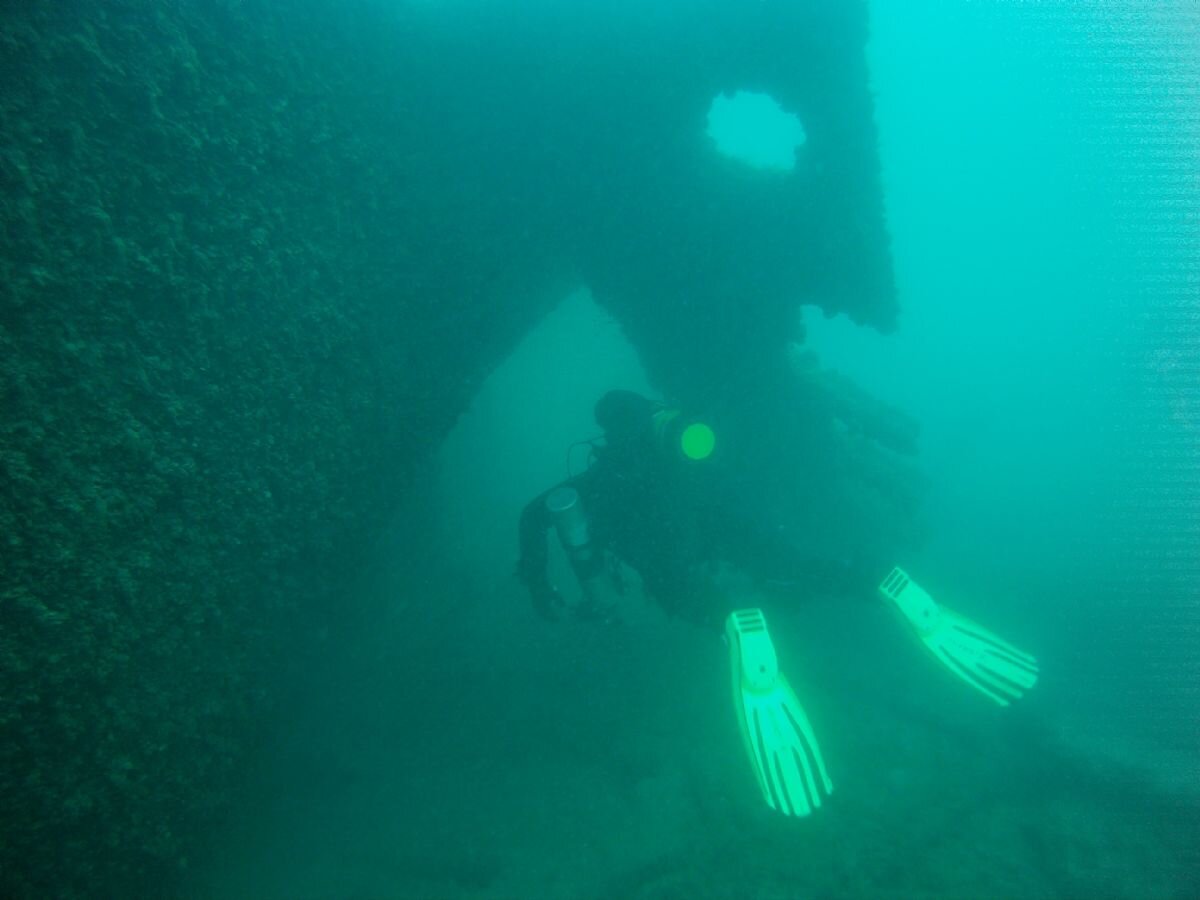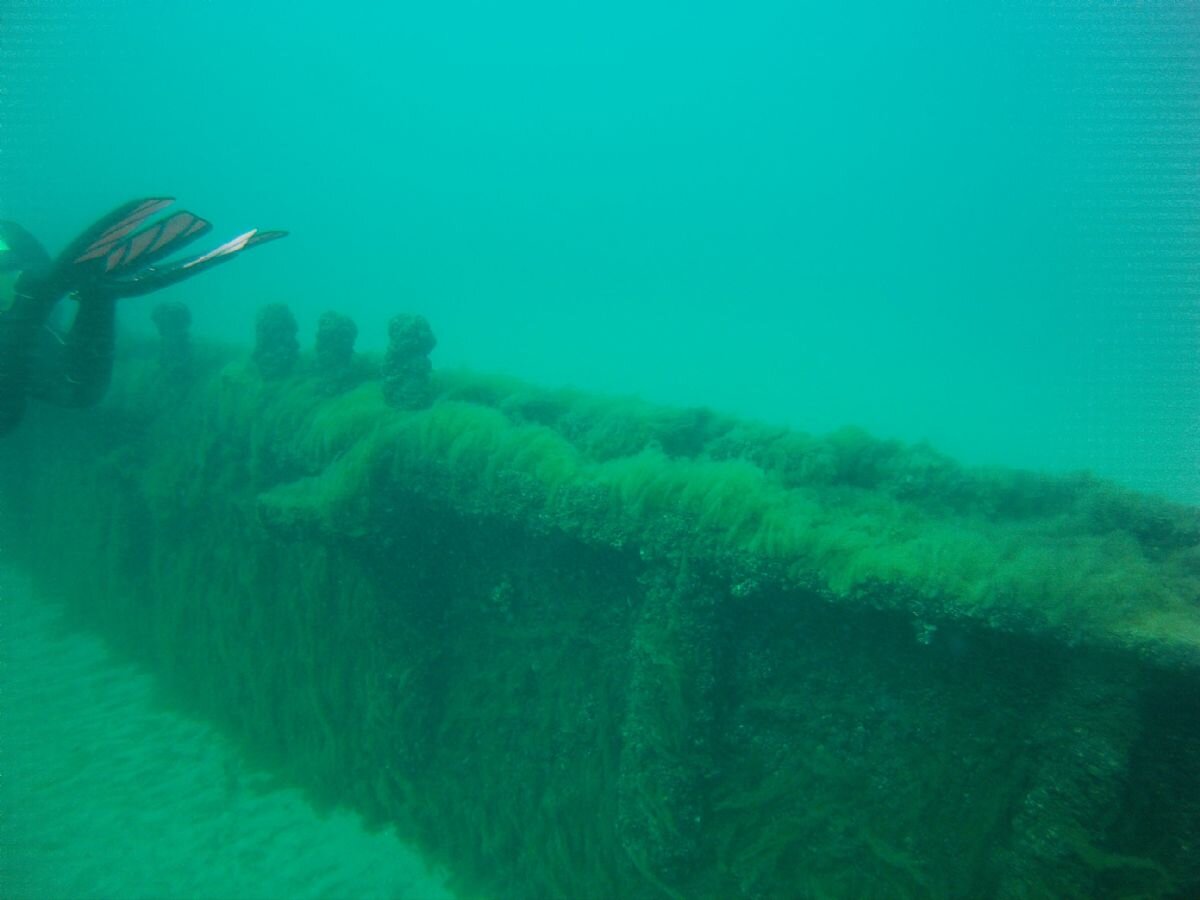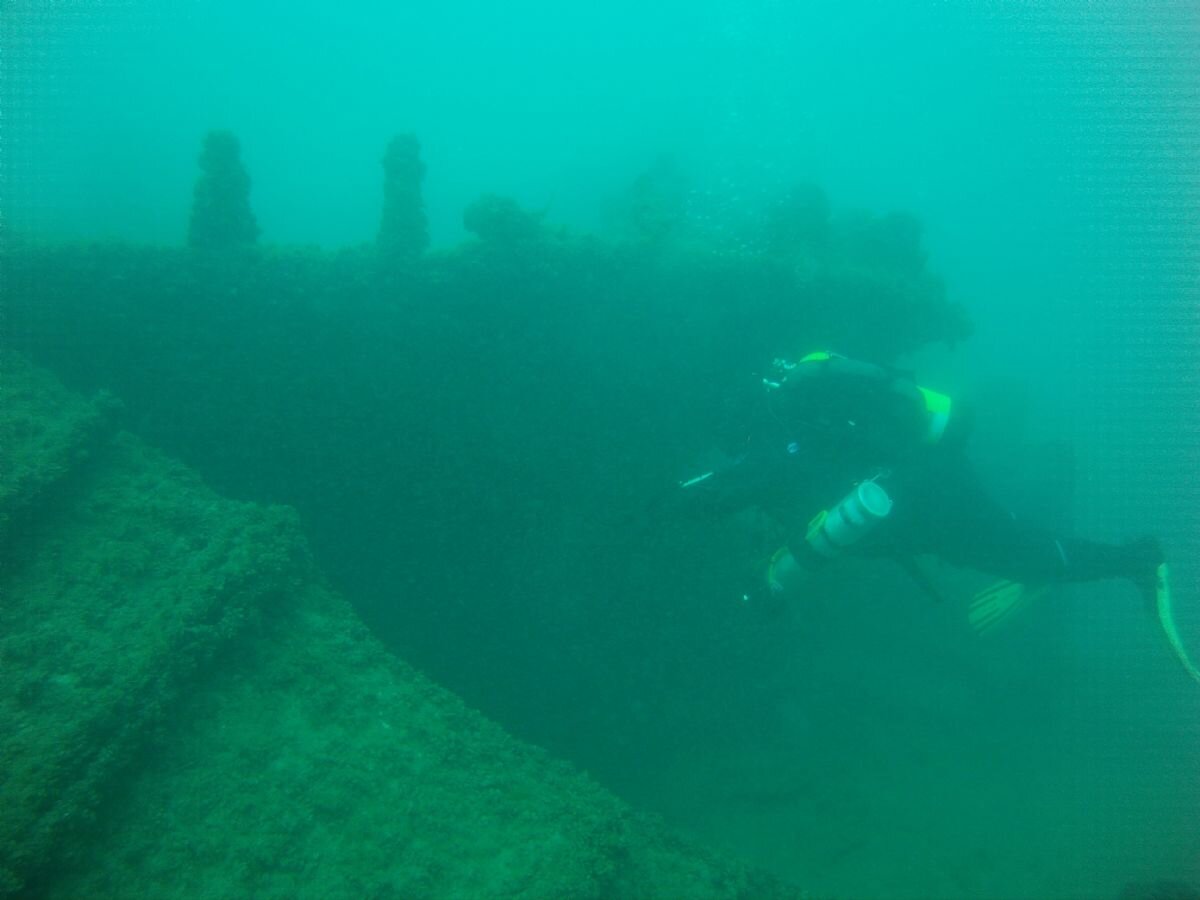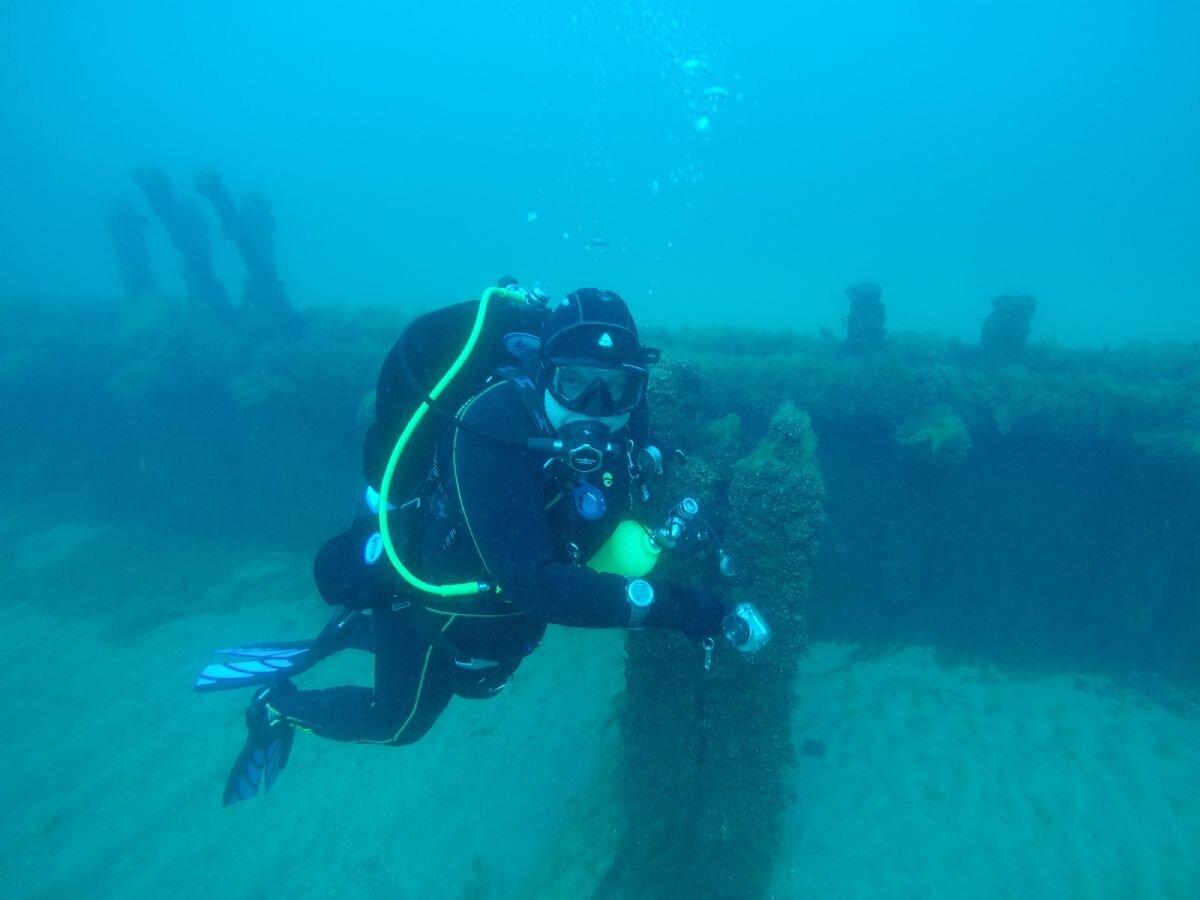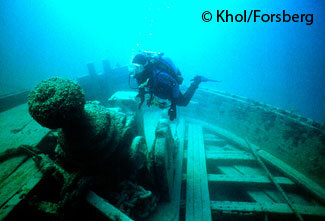The David Dows Shipwreck
Anthony Borgo November 2020
Considered to be the largest sailing vessel to navigate the Great Lakes, the David Dows met its untimely demise on November 30, 1889 off the coast of Whiting. The remains of the David Dows, nicknamed the Queen of the Lakes, can be found in 42 feet of water, 6 3/8 miles N. 70 degrees 30’ East from the Calumet Harbor lighthouse and 8 miles North 21 degrees 45’ from the furnace stack of Arcelor Mittal. According to Tim Early, a shipwreck diver, there are eight documented wrecks within a two-mile radius of Whiting’s Lakefront Park but none more famous than the David Dows.
It was a warm spring day in May 1881 when the David Dows began her maiden voyage. The launch drew massive crowds to Toledo, Ohio. People journeyed from all over the country to witness a new vessel that was causing quite a stir in the marine community. As the people arrived to the shores of Lake Erie, the David Dows stood with a sleek black hull and five towering masts. The ship was built by John and D. E. Bailey.
David Dows, merchant
According to an April 21, 1881 Toledo Blade article, “Forests have been leveled for her timbers, hundreds of kingly oaks have been felled for her symmetrical frame, cunning shipwrights have exhausted their art in deriving for her lines of grace and beauty and five-score men have incessantly toiled and wrought.” The David Dows was named after a New York commission merchant who was a friend and business associate of the vessel’s owner. The ship’s owners were Miles Carrington and Theodore Casey.
The five masts ranging in size from 21 to 36 inches in diameter and were 97 feet high. A topmast 65 feet high was then added to each of these, making the total height 162 feet. The five masts enabled the David Dows to carry an enormous 70,000 yards of the finest Mt. Vernon duck canvass without being top heavy. The foremast was square rigged, with double top-sails and topgallant sails, making this proud lady an unmistakable sight from shore. In addition, she had two centerboards to help her navigate a straight course and they were retractable so she could sail the shallow waters near some ports. Her keel was 260 feet and her overall length was 278 feet. The ship’s rib framers were strengthened by ten tons of eight-inch strapping, a new idea at that time.
Guests touring the ship on that spring time were amazed to find furnishings no less luxurious than those in the finest hotels of the time. The forecastle and cabin, both above deck, were quite comfortable and filled with modern conveniences. The large, roomy forecastle featured berths for eight men plus a cozy sitting room. In the cabin there were spacious rooms for all of the vessel’s officers and a handsome dining room with hand carved ceiling panels.
Eight large hatches accessed the hold which could house 2,500 to 2,800 tons of soft coal or 90,000 bushels of wheat. The size of the David Dows’ loads was limited by the shallow waters of the various lake harbors. The Queen of the Lakes set records for hauling grain but she was too large to maneuver very well. As a result, the David Dows was involved in two previous collisions. The first involved the sinking of the schooner Charles K. Nims and the second accident involved the schooner Richard Mott that caused the deaths of four crewmen due to drowning
The Aurora next to David Dows
The topmasts of the David Dows were eventually taken down and her rigging was simplified in order to convert her into a barge. Even with these modifications the David Dow was fated for tragedy. On November 16, 1889 cast its lines for the last time when it left for Chicago with a load of coal. The steamer Aurora was supposed to tow the David Dows to its Lake Michigan destination.
On November 23rd the Aurora, which also had the schooner George W. Adams in tow, met up with the David Dows off Manitou Island near the head of Lake Michigan. The Aurora then towed the Queen of the Lakes down Lake Michigan into a strong gale with heavy seas and blustery snow. The snow was so thick the three boats were completely hidden from each other. At 8 p.m. on November 29th the David Dows sprang a leak, however, the steam and hand pumps could only slow the level of water building up in the hold.
T.T. Morford
At 3 a.m. on November 30th the steam pump finally gave out. After a long and ultimately fruitless effort to bring the David Dows nearer the port of Chicago, Captain Ed Kelly cast off its tow line in an effort to go for help. When the crew of the David Dows saw this they fell into despair. The stopped all pumping and climbed the rigging to await their fate. When the crew was finally rescued by the T.T. Morford tug boat, the men all suffered from severe frostbite but none of them lost their lives.
As for the David Dows she became one mass of ice from aft to stern. The grand lady eventually succumbed to the weight of the ice. She rolled onto her side and eventually sunk to the depths of Lake Michigan headfirst. The David Dows, now a shipwrecked vessel, was insured for $60,000. Over the years, divers have visited the Queen of the Lakes on the bottom of Lake Michigan were she remains to this day.

